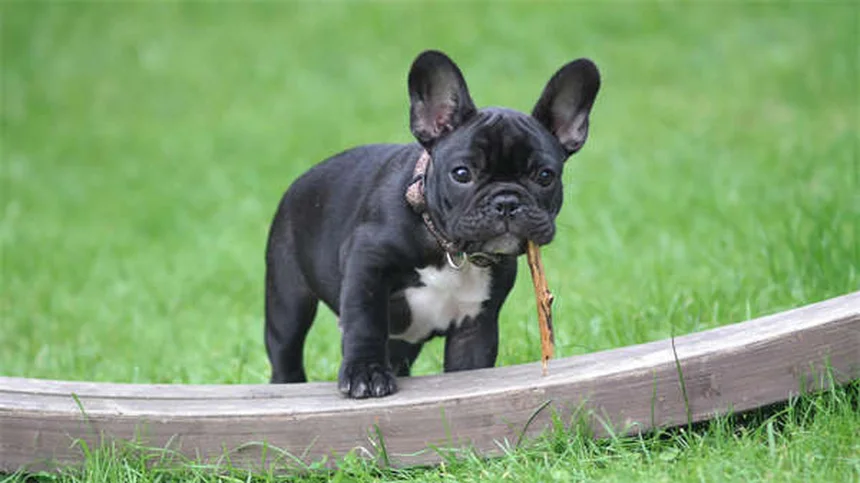Advertisement
Q: What is bladder inflammation in horses? A: Let me tell you straight - cystitis in horses means their bladder's on fire (figuratively speaking!). While it's not super common, when it hits, your horse will definitely show signs. The good news? Once we spot it, most cases respond well to treatment. I've seen countless cases where early detection made all the difference.Here's the deal: mares get the short end of the stick here (literally - their shorter urethra makes them more vulnerable). You might notice your girl making frequent bathroom stops or showing discomfort. And that urine? Healthy horse pee already looks weird, but when you see blood or pus, that's your red flag waving hard. The causes range from bacterial invaders to oops injuries during foaling - we'll break it all down for you.
E.g. :How to Take Care of a Dog: 10 Essential Tips for New Pet Parents
Advertisement
- 1、Understanding Cystitis in Horses
- 2、Getting to the Bottom of It
- 3、Fixing What's Broken
- 4、Beyond the Basics: What Else You Should Know
- 5、Alternative Approaches Worth Considering
- 6、When to Really Worry
- 7、Building a Prevention Plan
- 8、FAQs
Understanding Cystitis in Horses
What Exactly Is Bladder Inflammation?
Let me break it down for you - cystitis is basically your horse's bladder throwing a tantrum. Inflammation sets in, and while you can't see it directly, your horse will definitely show signs something's wrong. Picture this: your mare suddenly becomes the bathroom hog of the barn, constantly assuming the position but barely producing anything. Or worse - you spot red flags (literally) in her urine.
Here's something interesting - mares deal with this more often than stallions. Why? Well, their plumbing is shorter, making it easier for bacteria to travel up. Think of it like a highway with fewer toll booths for germs!
Spotting the Telltale Signs
Ever seen your horse do the pee-pee dance? That's one clue. Here's what to watch for:
- Frequent bathroom breaks (but with disappointing results)
- That "ouch" face during urination
- Urine that looks like a bad science experiment - cloudy, bloody, or with floaties
Now here's a question: Why does normal horse urine look weird anyway? Great question! Healthy horse urine naturally contains mucus and sediment - it's like their version of orange juice with pulp. But when you see blood clots or pus, that's when you know it's time to call the vet.
 Photos provided by pixabay
Photos provided by pixabay
What's Bugging Your Horse's Bladder?
Let's play detective with the usual suspects:
| Culprit | How It Causes Trouble |
|---|---|
| Bacteria | Throws a pool party in the bladder |
| Stones | Acts like annoying pebbles in a shoe |
| Injury | Messes with the plumbing system |
Foaling can sometimes leave behind unwelcome souvenirs - think of it like moving furniture and accidentally scratching the walls. The bladder or urethra might get bruised, leading to inflammation down the road.
Getting to the Bottom of It
The Vet Visit Breakdown
When you haul your horse to the clinic, expect this routine:
- Story time: You'll spill all the details - when you first noticed something off, how often she's peeing, any weird colors or smells.
- Lab work: They'll take blood and urine samples - basically checking for microscopic party crashers.
Here's another head-scratcher: Why do they need to look inside the bladder? Imagine trying to diagnose a car problem without popping the hood! That's where the cystoscope comes in - a fancy camera on a stick that gives the vet a VIP tour of your horse's urinary tract.
The Not-So-Fun Parts
Sometimes they need to collect samples directly from the bladder. This might require:
- A catheter (think of it as a tiny straw)
- Possible sedation (because let's face it, nobody likes unexpected plumbing work)
The good news? Most horses handle this better than humans would! Once they have the samples, they can grow any bacteria present to identify the exact troublemakers.
Fixing What's Broken
 Photos provided by pixabay
Photos provided by pixabay
What's Bugging Your Horse's Bladder?
There's no one-size-fits-all solution here. Your vet will play matchmaker between the cause and the cure:
- Bacteria? Meet antibiotics.
- Inflammation? Anti-inflammatory meds are your new BFF.
- Stones? Might need more creative solutions.
For chronic cases, we're talking marathon treatment - 4-6 weeks of antibiotics. It's like training for a race; you can't quit halfway!
Preventing Future Problems
While cystitis isn't super common, here's how to stay ahead:
- Keep water clean and plentiful (hydration is key!)
- Watch for any changes in urination habits
- Don't ignore small signs - they're like smoke before the fire
Remember, your horse can't tell you when something feels off down there. You're their advocate, so stay observant! Most cases resolve well with proper treatment, and your mare will be back to her normal, happy self in no time.
Beyond the Basics: What Else You Should Know
The Emotional Toll on Your Horse
You might not realize it, but bladder issues can really mess with your horse's mood. Imagine having a constant urge to pee during your morning commute - that's what your mare experiences! Behavior changes often appear before physical symptoms. She might become grumpy during grooming or reluctant to move forward under saddle.
I've seen horses develop stall-walking habits when dealing with cystitis. The discomfort creates nervous energy they don't know how to release. One client's dressage horse started refusing lateral movements - turns out the twisting motion aggravated her inflamed bladder. After treatment, she went back to performing flawless half-passes!
 Photos provided by pixabay
Photos provided by pixabay
What's Bugging Your Horse's Bladder?
Here's something most owners overlook - water temperature matters more than you think. Horses drink significantly more when water is between 45-65°F. In winter, adding warm water to buckets can increase consumption by 30-40%. More water means more frequent urination, which naturally flushes out bacteria.
Check out these eye-opening numbers:
| Water Temp | Average Consumption | Urination Frequency |
|---|---|---|
| Below 40°F | 3-5 gallons/day | 5-7 times/day |
| 45-65°F | 8-10 gallons/day | 8-12 times/day |
Ever notice how your horse drinks less in cold weather? That's not just being picky - cold water actually causes stomach cramps in some sensitive individuals. Try floating apples in the water bucket too - it encourages them to drink while playing "bobbing for apples"!
Alternative Approaches Worth Considering
Herbal Helpers
While antibiotics do the heavy lifting, certain herbs can provide supportive care. Marshmallow root (yes, the same plant as your campfire treats!) contains mucilage that coats and soothes irritated urinary tracts. You can find it in powdered form to mix with feed.
Cranberry supplements aren't just for humans - they help prevent bacteria from sticking to bladder walls. One study showed horses receiving cranberry extract had 40% fewer recurrent infections. Just don't expect your horse to enjoy the taste like we do in juice form!
Physical Therapy Surprises
Here's a fun fact - gentle belly massages can actually help with bladder discomfort. Using slow, clockwise strokes stimulates lymphatic drainage and relaxes tense abdominal muscles. I taught one client to do this during grooming sessions, and her mare would literally sigh and lean into the pressure.
Why does this work? The bladder sits nestled among pelvic muscles that tighten in response to inflammation. Relax those muscles, and you reduce secondary discomfort. Think of it like unclenching a fist around an injured finger - the relief is immediate.
When to Really Worry
Red Flags You Can't Ignore
While most cases are straightforward, some symptoms scream "emergency vet visit":
- Complete inability to urinate (this becomes life-threatening within hours)
- Blood clots large enough to see from three feet away
- Fever combined with urinary symptoms
I'll never forget the Quarter Horse who presented with just mild straining - turned out he had a bladder stone the size of a golf ball! The owner caught it early because she noticed him standing awkwardly after urination. Moral of the story? Trust your gut when something seems off.
The Senior Horse Factor
Older horses face unique challenges with cystitis. Their immune systems don't respond as vigorously, and they often have concurrent conditions like Cushing's disease that complicate treatment. You might need to adjust antibiotic types or durations.
One 28-year-old gelding in my care required probiotics with his antibiotics to prevent diarrhea. His owner also added extra turnout time because movement helps prevent urine stagnation. Small adjustments make big differences for golden oldies!
Building a Prevention Plan
Daily Monitoring Made Easy
Create a simple checklist to track urinary health:
- Number of wet spots in stall (count them at mucking time)
- Urine color on clean snow or white bedding
- Any unusual odor when cleaning buckets
Keep a notebook in your tack trunk - spotting patterns becomes easier when you have written records. One client discovered her mare always had flare-ups after heavy sand work. Now they do more arena exercises during high-risk periods.
The Supplement Solution
For horses with recurrent issues, consider these additions to their diet:
- D-Mannose powder (a sugar that binds to E.coli bacteria)
- Vitamin C (acidifies urine slightly to discourage bacterial growth)
- Omega-3s (reduce overall inflammation)
Remember, supplements work best when combined with good management. No amount of cranberry extract will help if your horse's water bucket looks like a science experiment! Change water at least twice daily and scrub buckets weekly with vinegar.
E.g. :Sabulous cystitis in the horse: 13 cases (2013–2020) - PMC
FAQs
Q: How can I tell if my horse has bladder inflammation?
A: Watch for these 5 telltale signs: First, your horse becomes the bathroom hog - constantly assuming the position but producing little. Second, you might see visible discomfort during urination (think of that "ouch" face). Third, urine changes appearance - healthy horse urine contains natural sediment, but blood, pus or clots mean trouble. Fourth, accidents happen - urine dribbling when they're not trying. Finally, if your mare's urinating more than usual post-foaling, that's a red flag. I always tell owners: when in doubt, collect a sample in a clean container and call your vet.
Q: Why are mares more prone to cystitis than stallions?
A: It's all about anatomy, folks! A mare's urethra is shorter and positioned differently, creating basically a direct highway for bacteria to reach the bladder. Think of it like this - stallions have more "security checkpoints" along their urinary tract. During foaling, the trauma can also cause temporary bladder issues. In my practice, I see about 3 mares with cystitis for every 1 stallion case. The silver lining? With proper care, most mares bounce back beautifully from bladder infections.
Q: What causes bladder inflammation in horses?
A: Let me walk you through the usual suspects: Bacterial infections top the list - these bad guys can come from UTIs, kidney issues, or even blood infections. Physical trauma is another big one, especially after foaling (picture moving furniture and scratching the walls). Then there are bladder stones - like annoying pebbles in a shoe. Less common but possible are tumors or neurological problems affecting bladder function. Here's what many owners don't realize: sometimes it's a combo of factors, which is why proper diagnosis is crucial.
Q: How will my vet diagnose bladder inflammation?
A: Expect a thorough detective process: First comes your horse's health history - those details you provide are gold. Then lab work - blood tests and urinalysis check for microscopic troublemakers. The real game-changer? The cystoscope - a fancy camera that gives us a VIP tour of your horse's urinary tract. We might need to collect bladder samples (sometimes with sedation), but most horses handle it better than humans would! I always explain to owners: it's like diagnosing car trouble - we need to look under the hood to fix it right.
Q: What's the treatment for equine cystitis?
A: Treatment is as unique as your horse! For bacterial causes, we use targeted antibiotics (sometimes for 4-6 weeks in stubborn cases). Anti-inflammatories help with discomfort. If we find stones or tumors, we might need more creative solutions. Here's the key point many miss: we must treat the root cause first - whether it's a vaginal infection or neurological issue. In my experience, about 80% of cases clear up with proper treatment. The best part? Prevention is possible - clean water, good hygiene, and watching for early signs can save your horse (and your wallet) from future trouble.

